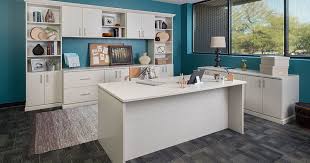As remote work becomes more common, creating a calm and relaxing Home Decor office space has become essential for maintaining productivity and mental well-being. A thoughtfully designed workspace can boost focus, reduce stress, and even improve your work-life balance. If you’re looking to create a tranquil home office that inspires both productivity and peace, follow these tips to design your perfect sanctuary.
Choose the Right Location
The first step in setting up a calming home office is choosing the right location. Opt for a space that minimizes distractions and allows for natural light, which has been proven to boost mood and energy levels. If possible, pick a room or corner away from the busiest areas of your home.
If you don’t have an entire room to dedicate to your office, make sure to select a quiet corner in a low-traffic area of your house. The key is to create a space where you can focus without interruptions.
Declutter and Simplify
A cluttered environment can lead to a cluttered mind. Keep your workspace free of unnecessary items and embrace a minimalist approach. Clear your desk of anything you don’t need daily, and invest in practical storage solutions like shelves, baskets, or drawers to keep things organized.
This decluttering process isn’t just about reducing physical mess—it’s also about promoting mental clarity. When your surroundings are organized, it’s easier to stay focused and productive without feeling overwhelmed.
Incorporate Soothing Colors
Color has a profound impact on mood and energy, so it’s important to select hues that promote calmness. Soft blues, greens, and neutrals are excellent choices for a relaxing workspace. These colors tend to have a soothing effect and can help lower stress.
For example, a pale blue wall can evoke feelings of tranquility, while soft shades of green connect with nature and foster balance. If you prefer neutrals, light grays or creams can help maintain a clean, serene atmosphere.
Bring Nature Indoors
Plants can play a huge role in creating a peaceful environment. Adding greenery to your home office not only enhances the aesthetic but also purifies the air and reduces stress levels. Some great low-maintenance plants for a home office include:
- Snake Plant: Known for improving indoor air quality.
- Pothos: Easy to care for and thrives in low light.
- Peace Lily: Symbolizes tranquility and can help improve air humidity.
Even if you don’t have a green thumb, there are plenty of hardy plants that require minimal care and still provide a calming atmosphere.
Prioritize Comfort
Comfort is essential for staying relaxed and focused during work hours. Invest in an ergonomic chair that supports good posture, as sitting for long periods can strain your back and shoulders if you’re not properly supported. Add a cushion or throw blanket to make your chair cozier.
Consider upgrading your desk setup as well. A height-adjustable desk or a monitor stand can help prevent neck and eye strain, while a soft rug underfoot can add a layer of comfort to your space.
Use Soft Lighting
Lighting can make or break the mood in your home office. Natural light is ideal, so if you have windows, let in as much sunlight as possible. However, not all workspaces have access to abundant natural light, so it’s essential to choose soft, warm lighting that mimics daylight.
Avoid harsh overhead lighting that can cause headaches and eye strain. Instead, use a combination of task lighting (such as a desk lamp) and ambient lighting (such as a floor lamp or string lights) to create a cozy and inviting atmosphere.
Incorporate Personal Touches
Personalizing your home office with items that bring you joy and peace can make a significant difference in how you feel while working. These could be framed photos, artwork, or sentimental objects. However, keep these additions minimal to avoid creating visual clutter.
Incorporating calming elements like candles, essential oil diffusers, or soft background music can also help make your workspace feel like a sanctuary.
Minimize Digital Distractions
While we rely on technology for work, it can also be a source of distraction and stress. Keep your desk free of unnecessary devices, and minimize notifications on your computer and phone.
Consider using blue light filters on your screens to reduce eye strain, especially if you work late into the evening. If possible, take regular breaks from staring at your screen by stepping outside or simply closing your eyes for a few minutes.
Create a Relaxation Zone
If you have the space, carve out a small area in your office dedicated to relaxation. This could be a cozy armchair for reading, a yoga mat for stretching, or simply a small table where you can enjoy a cup of tea.
Having a dedicated space to unwind during breaks can help refresh your mind and maintain a healthy work-life balance. Even in a small office, a designated relaxation spot can provide a much-needed mental break from work tasks.
Maintain Boundaries
Finally, setting clear boundaries between work and home life is crucial for maintaining a calm and relaxing home office. At the end of your workday, try to tidy up your desk and close your office door if possible, signaling that it’s time to transition into personal time.
If your office space doubles as another room (such as a bedroom or living room), consider using physical boundaries like a room divider, curtain, or even a folding screen to separate your workspace from your relaxation space.

